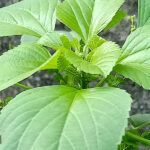Beware of These High-Risk Peanut Pests
Protect peanut fields before thrips open the door to viruses and other diseases.

Taking precautions against invasive species early in the growing season is critical to a successful peanut crop. According to the University of Georgia Extension, growers should pay special attention to protecting emerging seedlings because the early season is a high-risk period for thrips.
Seedlings are especially susceptible to the damaging effects of thrips. This can lead to potential yield loss and opens the door to other viruses and diseases. Early management starts with monitoring and scouting fields regularly. A thrips infestation causes leaves to become distorted and covered in coarse stippling that can lead to them turning brown and dying.
To combat the effects of these tiny insects, remember to give plants adequate room to avoid overcrowding and provide proper irrigation and fertilization. Get ahead of the problem by treating peanut seeds with CruiserMaxx® Peanuts insecticide and fungicide seed treatment. CruiserMaxx® Peanuts supports robust and vigorous crops and protects against chewing and sucking insects.
- Thrips are an invasive species that pose a significant threat to peanut seedlings.
- Insect damage can open the door to viruses and other diseases that worsen yield losses.
- CruiserMaxx® Peanuts helps growers stay ahead of early-season threats.























